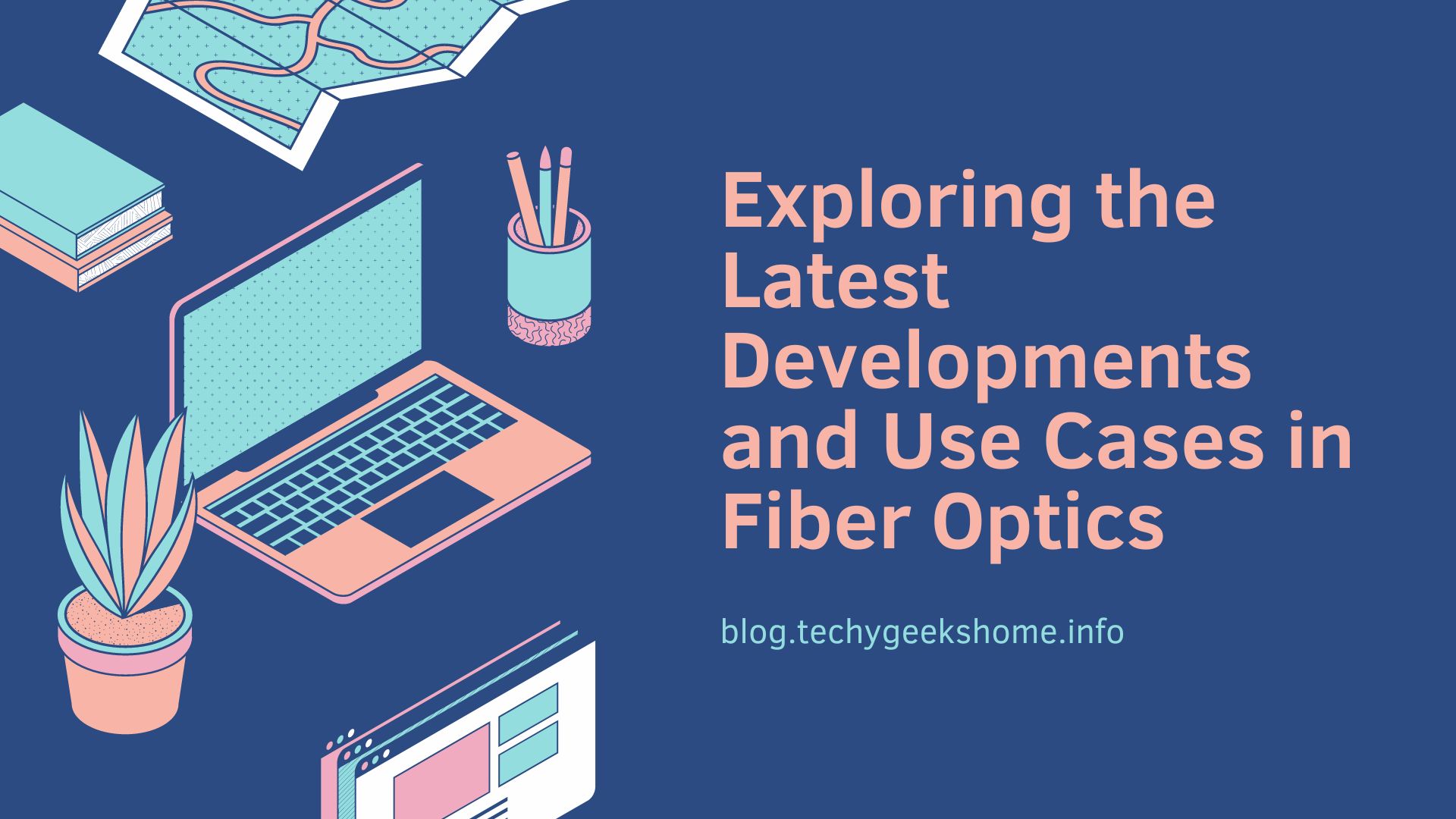The internet has become an integral part of our professional and personal lives, with over 5 billion people using it every day. Long gone are the days of copper being the main way of connecting to the internet, with many people now connecting through fiber optic cables. Fiber optics offers numerous advantages over traditional copper cables, and the best thing is that it is continuously evolving. In this article, we discuss the latest developments and trends in this transformative technology.
Achieving Multi-gigabit Speeds
If you are old enough, you remember the days of dial-up, where peak speeds reached around 56 kilobits per second. These speeds were only fast enough to load simple web pages and would cut off if someone picked up the phone because they used the same phone lines.
The introduction of the Digital Subscription Line ushered in an age where people could see internet speeds of one to seven megabits per second, which was only enough for simple emailing, online scrolling, and watching standard-definition video.
The development of fiber optics ushered in the age of multi-hundred megabit per second speeds at first. Apart from speed, the main difference between fiber internet vs. DSL is the material used. While DSL uses the same phone lines installed in most homes, the fiber optic cables that enable fiber internet are made of glass and transmit signals within it at the speed of light.
As the demand for faster internet speeds and more broadband has increased, the technology has grown to enable multi-gigabit speeds. In addition to using light as the transit signal, fiber optics uses various multiplexing techniques to increase speeds. These include:
- Orthogonal Frequency Division Multiplexing (OFDM): This technique splits the available frequency spectrum into multiple subcarriers, with each subcarrier carrying a small part of the data.
- Wavelength Division Multiplexing (WDM) – WDM uses multiple wavelengths or colors of light to transfer data. Since each wavelength carries a separate data stream, WDM can increase the amount of data transmitted per second, enabling multi-gigabit speeds.
- Time Division Multiplexing (TDM): This technique divides time into different slots to allow each to carry data from a separate source. This technology can switch between sources so fast that it looks like a fiber optics cable is transmitting multiple data streams simultaneously.
Flexible and Bend-Insensitive Fibers
Because they use glass fibers for data transmission, signal integrity and degradation depend on the glass quality and how well light passes through fiber optic cables. Bending a fiber optic cable can lead to transmission losses for various reasons.
First, the glass can develop micro-cracks that lead to light signals bleeding outside the thin cables. Manufacturers are dealing with this issue by using thinner glass of higher purity. Such glass has few defects, meaning you can bend it without causing microscopic cracks and defects.
Second, bending a fiber optic cable interrupts the light signal, causing it to reflect and refract inside the fiber unpredictably. The light can also be lost through the cladding, causing signal loss. Using flexible glass fibers gives optical cables a much smaller bend radius, which means you can bend them to the point of breaking with partial data loss.
Remember, you can break the glass fibers inside if you bend it too far, and you would have to patch that cable or get a new one if this happens.
Flexible and bend-insensitive fiber optic cables improve their ease of installation, meaning you can pass them through tight spaces without worrying about breaking them. These properties also ensure they can be installed almost anywhere with little fear of damage from bending.
AI-Optimized Fiber Networks
Artificial intelligence and machine learning might sound like the latest technological buzzwords, but they have proven crucial in numerous applications. They are now being used to optimize fiber-optic networks by enhancing their performance, reliability, and efficiency.
AL and ML algorithms analyze vast amounts of data from numerous sensors and network components to predict when equipment might fail. Once network operators receive a notification that something might go wrong in the future, they can proactively address these potential issues, thereby reducing downtime and improving overall network reliability.
Bandwidth and internet speed demands fluctuate constantly, and network providers have to ensure optimized resource allocation so that all their users have a great experience using their services. Artificial intelligence algorithms can help with optimizing the allocation of resources, such as bandwidth, based on real-time demand.
Lastly, internet service providers use AI for network traffic predictions in their fiber optics networks. By predicting network traffic patterns and adapting the network to handle peak loads, AI is helping prevent congestion and ensuring high-speed connectivity.
Fiber Optic Sensing
While most people think about internet and data transmission applications when they think about fiber optic cables, they are used for much more. One application that many people do not know about is fiber optic sensing.
Fiber optic sensing leverages the physical properties of light to sense different phenomena, including strain, temperature, ground movements, and more as it travels down the fiber. When used in this way, it creates thousands of smaller sensor points along itself.
Fiber sensing technology does not require an interface between the fiber and the external sensors, reducing costs and complexity. This technology relies on known light scattering within a specific medium, such as glass fiber. Detectors can then determine the location, volume, and wavelength of the scattered protons to determine the position and magnitude of the events causing the scattering.
Use of Fiber Optics in Hybrid Networks
A hybrid network allows devices to connect using more than one type of communication standard. Most people know about Ethernet and Wi-Fi connectivity, but the use of fiber optic cables in these applications is growing. Businesses and individuals are already using fiber optic cables to connect modems to routers, where they can connect access points that enable wireless connections.
Whether at home or work, you expect a stable and reliable connection to the internet and other infrastructure such as servers. Fiber optic technology is at the center of allowing both, even though it is being used in numerous other areas. Its rapid development means we will keep seeing new and better applications of this technology over time.
Discover more from TechyGeeksHome
Subscribe to get the latest posts to your email.











